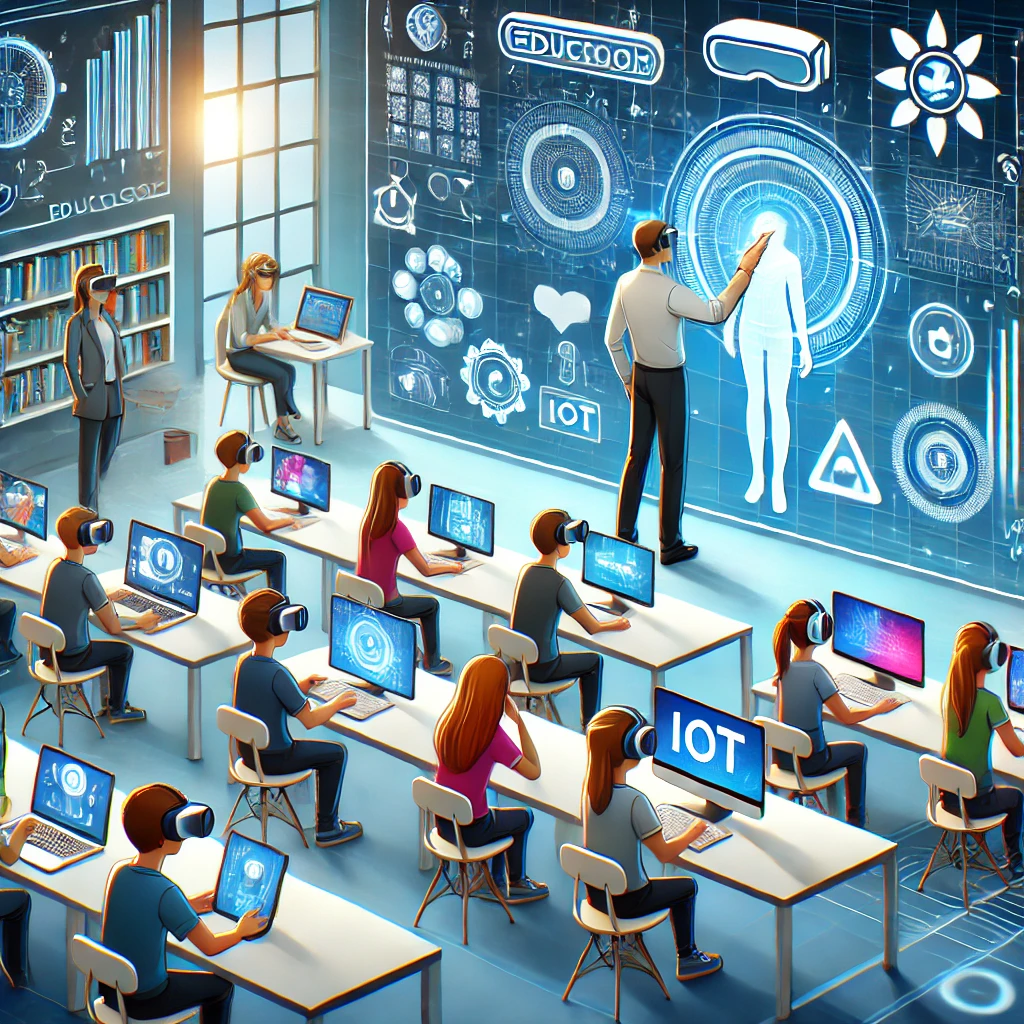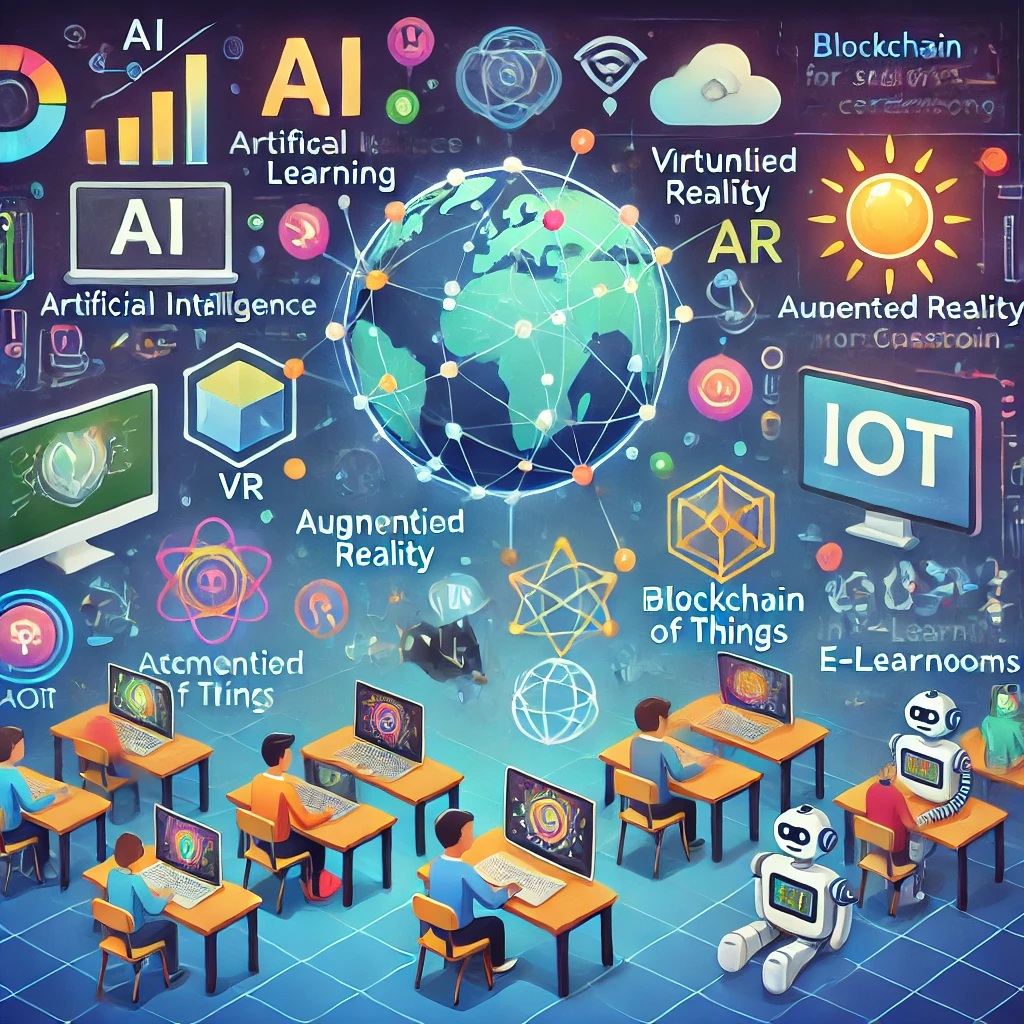Future Technology in Education:Transforming Learning in 2025 and Beyond
Introduction
The rapid advancements in technology have paved the way for revolutionary changes in the education sector. From virtual classrooms to AI-driven personalized learning, the integration of technology in education has become more than a trend—it’s the future. By 2025 and beyond, cutting-edge innovations promise to make learning more engaging, accessible, and efficient than ever before. In this article, we will explore the latest technological advancements reshaping education, their benefits and challenges, and how educators, students, and institutions can adapt to stay ahead.
The Role of Technology in Education
Technology in education serves as a bridge to address the evolving needs of both students and educators. Here’s how:
- Accessibility: Learning resources are now available to students from all corners of the globe, breaking geographical barriers.
- Efficiency: Automated grading systems and administrative tools save time for educators.
- Personalization: Tailored educational experiences cater to individual learning styles and paces.
- Engagement: Interactive tools and gamified learning make education enjoyable and engaging.
- Skill Development: Prepares students for a tech-driven workforce with skills like coding, data analysis, and AI understanding.

Emerging Technologies in Education
1. Artificial Intelligence (AI)
AI is transforming education by providing:
- Personalized Learning: AI systems analyze student performance and suggest tailored content.
- Automated Support: Chatbots answer student queries 24/7, enhancing learning support.
- Smart Grading: AI tools assess assignments quickly and fairly, saving time for educators.
2. Virtual Reality (VR) and Augmented Reality (AR)
VR and AR are redefining experiential learning:
- Virtual Classrooms: Students can attend immersive, interactive lessons from anywhere.
- AR Learning Apps: Overlay virtual objects onto real-world environments, enhancing understanding.
- Simulated Experiences: Medical students, for example, can practice surgeries in a virtual setting.
3. Blockchain Technology
Blockchain offers transparency and security:
- Credential Verification: Stores student certificates securely, preventing forgery.
- Decentralized Learning Systems: Allows secure sharing of educational content globally.
- Smart Contracts: Automates tuition payments and resource access.
4. Internet of Things (IoT)
IoT devices streamline educational experiences:
- Smart Classrooms: IoT-enabled devices, such as interactive whiteboards, improve engagement.
- Attendance Tracking: Automated systems track attendance and participation.
- Energy Efficiency: IoT tools monitor and optimize resource usage in schools.
5. Gamification and E-Learning Platforms
Platforms like Kahoot, Duolingo, and Coursera are making learning fun and accessible:
- Gamified Content: Motivates students through rewards and challenges.
- Massive Open Online Courses (MOOCs): Provides access to top-quality courses for free or minimal cost.
- Progress Tracking: Monitors student achievements and areas for improvement.
6. 5G Connectivity
Faster internet enhances:
- Real-Time Collaboration: Smooth video conferencing and file sharing.
- High-Quality Content Streaming: Supports interactive and immersive educational experiences.
- Remote Learning: Enables seamless virtual classes, even in rural areas.

Benefits of Future Technology in Education
1. Enhanced Engagement
Interactive tools like VR and gamified platforms captivate student interest, making learning enjoyable.
2. Personalized Learning Experiences
AI-driven systems adapt to each student’s needs, helping them grasp concepts effectively.
3. Global Access to Quality Education
E-learning platforms and virtual classrooms provide education to underserved communities.
4. Improved Teacher Efficiency
Automation of administrative tasks allows teachers to focus on teaching and mentoring.
5. Preparation for the Future Workforce
Exposure to technologies like AI and IoT equips students with skills essential for future careers.
Challenges of Implementing Technology in Education
1. Cost
Advanced tools and infrastructure can be expensive, making it difficult for underfunded institutions to adopt them.
2. Digital Divide
Students from low-income backgrounds may lack access to devices or high-speed internet.
3. Data Privacy Concerns
Storing student data in digital systems raises concerns about cybersecurity and privacy breaches.
4. Resistance to Change
Educators and institutions may face challenges in adapting to new technologies due to a lack of training or resources.
5. Overdependence on Technology
Excessive reliance on tech tools may hinder critical thinking and creativity in students.
How to Adapt to the Future of Education Technology
1. Invest in Infrastructure
Governments and institutions should allocate budgets for building tech-friendly campuses and providing digital devices.
2. Promote Digital Literacy
Both students and teachers need training to effectively use educational technologies.
3. Focus on Inclusivity
Ensure that technology reaches underserved areas through subsidized devices and free internet access.
4. Adopt Hybrid Learning Models
Combine traditional teaching methods with technology to create a balanced learning environment.
5. Emphasize Ethical Use
Educate students about responsible use of technology and data privacy practices.
FAQs
Q: What is the role of technology in future education?
Technology enhances learning by making it personalized, accessible, and engaging through tools like AI, VR, and IoT.
Q: What are the top technologies transforming education?
AI, VR/AR, blockchain, IoT, and gamified platforms are among the top innovations shaping education.
Q: How does technology benefit teachers?
It automates administrative tasks, provides real-time insights into student performance, and offers digital teaching resources.
Q: Is technology in education accessible to everyone?
Efforts are being made to bridge the digital divide, but accessibility remains a challenge in some regions.
Q: What are the challenges of using technology in education?
Cost, privacy concerns, digital divide, and resistance to change are key challenges.